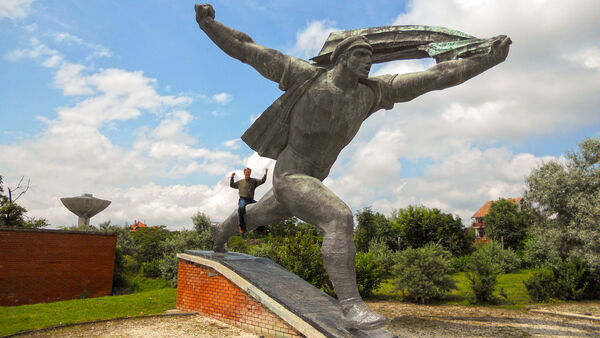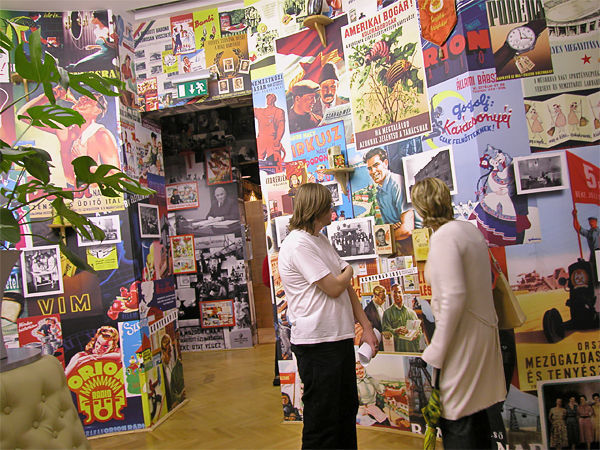Budapest Remembers the Cold War
By Rick Steves


If communism was a religion during the Cold War, Budapest was Communist Europe's sin city. Offering tourists from communist countries a taste of the decadent West, it was famous for rock concerts, a sport shop selling Adidas, and the first McDonald's east of the Iron Curtain.
Back when eating a Big Mac was a mark of defiance in this corner of the world, there was nothing fast or cheap about Western "fast food." A Happy Meal was a splurge. People traveled from other communist countries to Hungary to wait in a line that stretched around the block for a burger and a Coke. Ronald McDonald stood on the street corner like a heretic prophet cheering on the downtrodden proletariat, while across the street, wannabe capitalists drooled over window displays featuring fancy tennis shoes that cost two months' wages.
Today, a younger generation of Europeans has no memory of the communist era. Enough time has passed that former Warsaw Pact nations can take a candid look at the period. And several of Budapest's most fascinating sights reflect a new generation's perspective.
The House of Terror — long the headquarters of communist Hungary's secret police — documents a terrible story. When the Communists moved into Budapest, their secret police took over the Nazi secret police headquarters. It was here that Hungarians suspected of being an enemy of the state were given sham trials, tortured, and routinely executed.
The museum's atrium features a Soviet tank and a vast wall covered with portraits of victims of this building. Exhibits cover gulag life, Social Realist art, and propaganda. A labyrinth built of pork-fat bricks reminds old-timers of the harsh conditions in the 1950s when lard on bread was the standard dinner.
As the slow elevator descends, a guard on video explains the execution process. When the door opens, you step into the basement chambers of torture and death. In 1956 the blood was hosed away and the cellar was made a clubhouse for the local communist youth club. You see it today as it was circa 1955, with chilling prison cells instead of kids' activity rooms.
Leaving the museum, you pass a poignant finale. The "walls of victimizers' are lined with photos and biographical information on members and supporters of both the Nazi and communist secret police — many of whom are still living, and who were never brought to justice.
Budapest's House of Terror is a particularly powerful experience for elderly Hungarians who actually knew many of the secret police and their victims…and remain their neighbors.
When the Soviet regime collapsed, hundreds of statues of Stalin, Lenin, and their local counterparts came crashing to the ground across central and eastern Europe.
Budapest's statues were promptly removed in 1989, as they were across the country, when the Hungarian Communist regime fell. But a clever entrepreneur hoarded many of the capital's statues — and just two years after the last Soviet soldier left Hungarian territory, they were presented in the newly created Memento Park as reminders of communist tyranny.
A visit to the park is a lesson in Social Realism, the art of communist Europe. Under the communists, art was acceptable only if it furthered the goals of the state. Aside from a few important figureheads, individuals didn't matter. Everyone was a cog in the machine — strong and stoic automatons — unquestioning servants of the nation.
Memento Park's jumbled collection of once-fearsome monuments now come across as almost comical, seeming to preach their ideology to each other, as locals and tourists take funny photos mocking them. The gift shop hawks a parade of communist kitsch. On my last visit I picked up a CD featuring 20 patriotic songs — The Greatest Hits of Communism — and a Stalin vodka flask.
Most of Europe's formerly communist countries have similarly fascinating sights sharing local perspectives on their own Cold War experience. In Tallinn, the Museum of Occupations and Freedom evocatively recalls Estonia's history under both Nazi and Soviet occupation. In Gdańsk, the excellent European Solidarity Center tells the story of Poland's heroic Lech Wałęsa and the shipyard workers who started communist Europe's avalanche to freedom. And on a thriving shopping street in Prague, wedged sadly between an American fast-food joint and a casino, stands the Museum of Communism. It recreates slices of communist life — from bland general store shelves (recalling an age when the only advertiser was the state) to typical classrooms (where poems on chalkboards extol once politically correct values like "the virtues of the tractor").
The transition to capitalism wasn't easy for any once-communist country, and Hungary's was perhaps particularly fraught, especially considering the political turbulence of recent decades. And since its 2010 landslide victory, Viktor Orbán's political party has gained broad, suppressive control of Hungary's media, educational system, and other key institutions once under the Communists' even more oppressive thumb. Here's hoping, as many Hungarians do — especially in urbane Budapest — that Hungary won't soon forget the heavy toll of living without its hard-earned civil freedoms.

